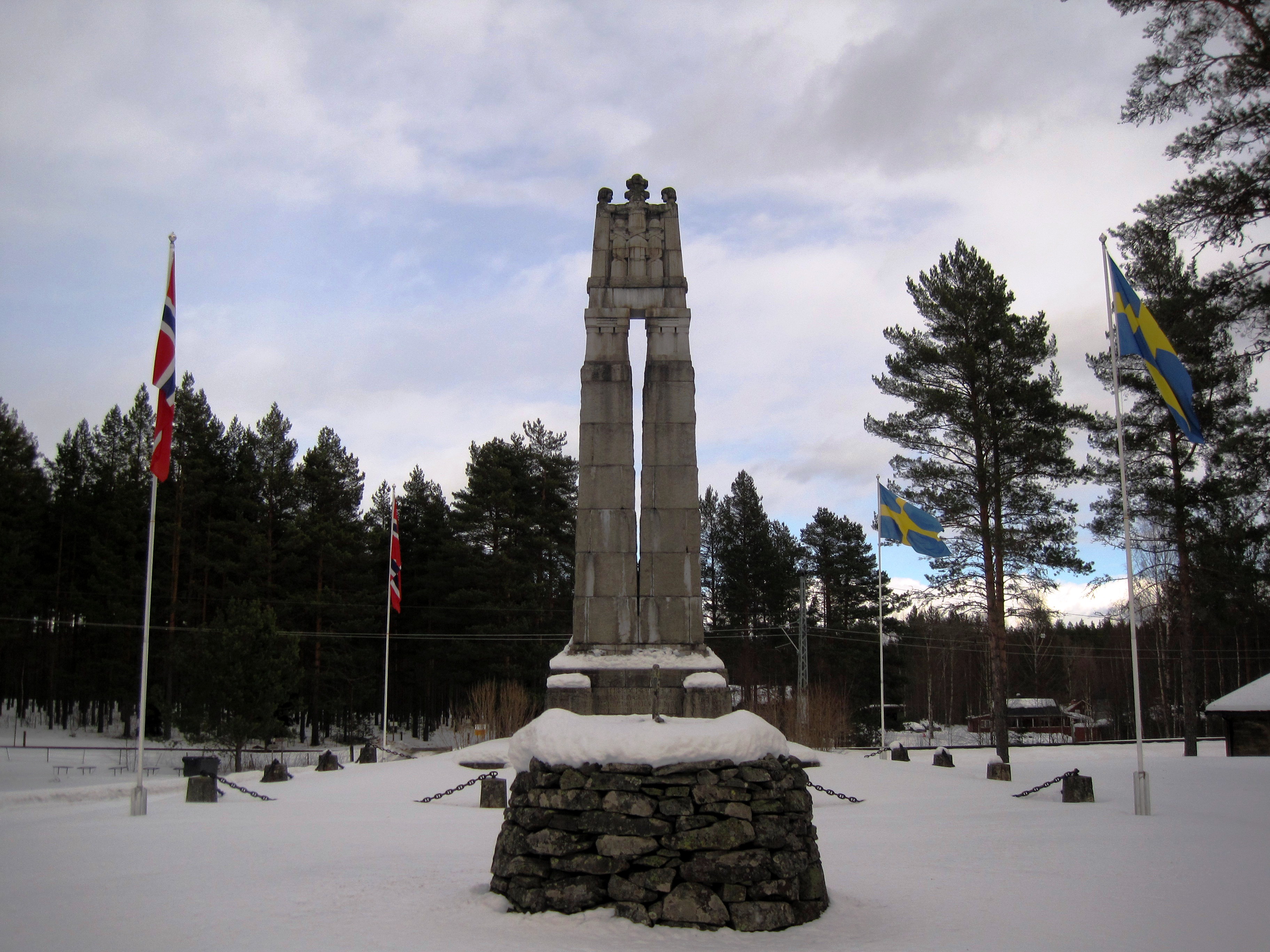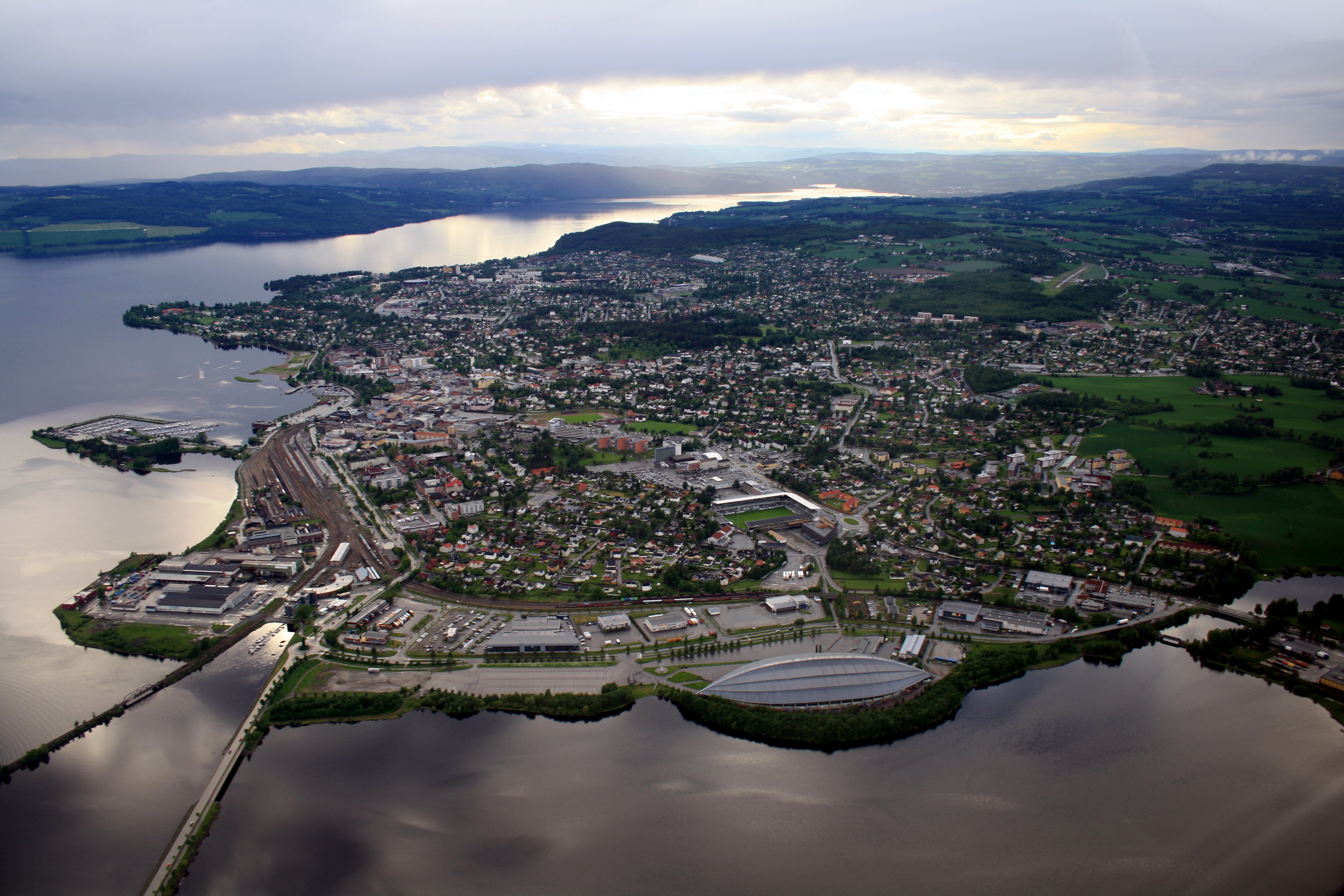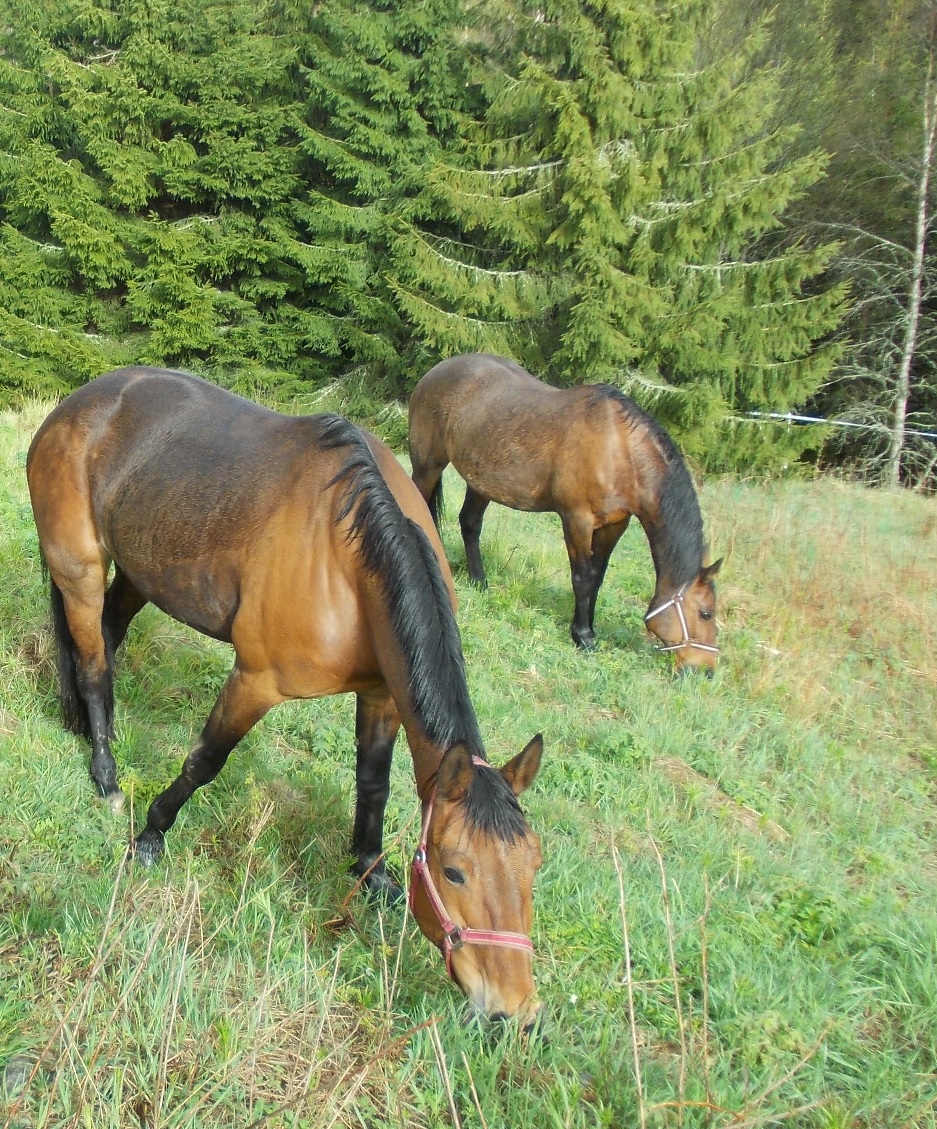|
Soot Canal
The Soot Canal ( no, Sootkanalen) was a canal system located in Eidskog Municipality in Innlandet county, Norway. Constructed in 1849, it has Norway's oldest sluice gates. It was the work of Engebret Soot (1786-1859). It was built to allow timber to be transported (floated) to the Halden sawmills. The canal was long and had 16 locks which extended from Lake Skjervangen at an elevation of above sea level up to Lake Mortsjølungen at above sea level. The Soot Canal was in operation from 1849 to 1932. The channel consisted of the original 16 locks between Skjervangen and Mortskjølungen. The Grasmobanen, a long railroad that hauled the timber between the lakes Mortsjølungen and Tvillingtjern, was also part of the canal system. In 1987, the municipality of Eidskog Eidskog is a municipality in Innlandet county, Norway. It is located in the traditional district of Vinger. The administrative centre of the municipality is the village of Skotterud. Other villages in the munici ... [...More Info...] [...Related Items...] OR: [Wikipedia] [Google] [Baidu] |
Eidskog
Eidskog is a municipality in Innlandet county, Norway. It is located in the traditional district of Vinger. The administrative centre of the municipality is the village of Skotterud. Other villages in the municipality include Magnor, Matrand, and Åbogen. The municipality is the 181st largest by area out of the 356 municipalities in Norway. Eidskog is the 155th most populous municipality in Norway with a population of 6,032. The municipality's population density is and its population has decreased by 4.1% over the previous 10-year period. General information The municipality was established on 1 January 1864 when the old Vinger Municipality was divided in two: Vinger (population: 6,226) in the north and Eidskog (population: 6,920) in the south. On 1 January 1986, the northern part of the Åbogen area (population: 14) was transferred from Kongsvinger Municipality to Eidskog Municipality. Name The municipality was named ''Eidskog'' (historically spelled ''Eidskogen''). The Old ... [...More Info...] [...Related Items...] OR: [Wikipedia] [Google] [Baidu] |
Norway
Norway, officially the Kingdom of Norway, is a Nordic country in Northern Europe, the mainland territory of which comprises the western and northernmost portion of the Scandinavian Peninsula. The remote Arctic island of Jan Mayen and the archipelago of Svalbard also form part of Norway. Bouvet Island, located in the Subantarctic, is a dependency of Norway; it also lays claims to the Antarctic territories of Peter I Island and Queen Maud Land. The capital and largest city in Norway is Oslo. Norway has a total area of and had a population of 5,425,270 in January 2022. The country shares a long eastern border with Sweden at a length of . It is bordered by Finland and Russia to the northeast and the Skagerrak strait to the south, on the other side of which are Denmark and the United Kingdom. Norway has an extensive coastline, facing the North Atlantic Ocean and the Barents Sea. The maritime influence dominates Norway's climate, with mild lowland temperatures on the se ... [...More Info...] [...Related Items...] OR: [Wikipedia] [Google] [Baidu] |
Skjervangen
Skjervangen is a lake in the municipality of Eidskog in Innlandet county, Norway. The lake lies less than northwest of the border with Sweden and about southwest of the village of Skotterud Skotterud is the administrative centre of Eidskog Municipality in Innlandet county, Norway. The village is located along the Norwegian National Road 2 and the Kongsvingerbanen railway line. Skotterud sits about south of the town of Kongsvinger .... See also * List of lakes in Norway References Eidskog Lakes of Innlandet {{Innlandet-lake-stub ... [...More Info...] [...Related Items...] OR: [Wikipedia] [Google] [Baidu] |
Canal
Canals or artificial waterways are waterways or engineered channels built for drainage management (e.g. flood control and irrigation) or for conveyancing water transport vehicles (e.g. water taxi). They carry free, calm surface flow under atmospheric pressure, and can be thought of as artificial rivers. In most cases, a canal has a series of dams and locks that create reservoirs of low speed current flow. These reservoirs are referred to as ''slack water levels'', often just called ''levels''. A canal can be called a ''navigation canal'' when it parallels a natural river and shares part of the latter's discharges and drainage basin, and leverages its resources by building dams and locks to increase and lengthen its stretches of slack water levels while staying in its valley. A canal can cut across a drainage divide atop a ridge, generally requiring an external water source above the highest elevation. The best-known example of such a canal is the Panama Canal. Many ... [...More Info...] [...Related Items...] OR: [Wikipedia] [Google] [Baidu] |
Eidskog Municipality
Eidskog is a municipality in Innlandet county, Norway. It is located in the traditional district of Vinger. The administrative centre of the municipality is the village of Skotterud. Other villages in the municipality include Magnor, Matrand, and Åbogen. The municipality is the 181st largest by area out of the 356 municipalities in Norway. Eidskog is the 155th most populous municipality in Norway with a population of 6,032. The municipality's population density is and its population has decreased by 4.1% over the previous 10-year period. General information The municipality was established on 1 January 1864 when the old Vinger Municipality was divided in two: Vinger (population: 6,226) in the north and Eidskog (population: 6,920) in the south. On 1 January 1986, the northern part of the Åbogen area (population: 14) was transferred from Kongsvinger Municipality to Eidskog Municipality. Name The municipality was named ''Eidskog'' (historically spelled ''Eidskogen''). The O ... [...More Info...] [...Related Items...] OR: [Wikipedia] [Google] [Baidu] |
Innlandet
Innlandet is a county in Norway. It was created on 1 January 2020 with the merger of the old counties of Oppland and Hedmark (the municipalities of Jevnaker and Lunner were transferred to the neighboring county of Viken on the same date). The new county has an area of , making it the second largest county in Norway after Troms og Finnmark county. The county name translates to "The Inland" which reflects that the county is the only landlocked county in Norway. The county covers approximately 17% of the total area of the mainland area of Norway. It stretches from the Viken county and the Oslo region in the south to Trøndelag county in the north. In the northwest, the county borders Møre og Romsdal and the Vestland county in the west. To the east the county borders the Swedish counties of Värmland and Dalarna. The northern and western areas of the county are dominated by the mountainous areas Rondane, Dovrefjell and Jotunheimen. The Galdhøpiggen mountain is located within t ... [...More Info...] [...Related Items...] OR: [Wikipedia] [Google] [Baidu] |
Sluice Gates
Sluice ( ) is a word for a channel controlled at its head by a movable gate which is called a sluice gate. A sluice gate is traditionally a wood or metal barrier sliding in grooves that are set in the sides of the waterway and can be considered as a bottom opening in a wall. Sluice gates are one of the most common hydraulic structures in controlling flow rate and water level in open channels such as rivers and canals. They also could be used to measure the flow. A water channel containing a sluice gate forms a type of lock to manage the water flow and water level. It can also be an open channel which processes material, such as a River Sluice used in gold prospecting or fossicking. A mill race, leet, flume, penstock or lade is a sluice channeling water toward a water mill. The terms sluice, sluice gate, knife gate, and slide gate are used interchangeably in the water and wastewater control industry. They are also used in wastewater treatment plants and to recover minerals in minin ... [...More Info...] [...Related Items...] OR: [Wikipedia] [Google] [Baidu] |
Engebret Soot
Engebret Olsen Soot (26 May 1786 – 3 March 1859) was a Norwegian engineer. He was one of Norway's first canal builders and joined the timber channels at Otteid and Mangen-Grasmo. He is known as the father of the Fredrikshald Canal (now known as the Halden Canal) in south-eastern Norway. He constructed locks and canals for the transport of both watercraft and timber. Biography Engebret Olsen Soot was born in Aurskog (now Aurskog-Høland) in Akershus, Norway. He started his career as a blacksmith and carpenter. In 1804, he built a mill on the Sotbekken, a small river at Lierfoss in Aurskog-Høland. From 1816 until 1825, he was a caretaker at the Mangenskogen forest in Aurskog-Høland. From 1827 to 1846 he was an inspector on the Halden watercourse () in Østfold and Akershus. In 1824 he built works from Fredrikshald to enable log transport from Stora Le in Dalsland, Sweden, into the Fredrikshald watershed. Soot built Otteidkanalen, Norway's first canal in Østre Otteid bet ... [...More Info...] [...Related Items...] OR: [Wikipedia] [Google] [Baidu] |
Halden
Halden (), between 1665 and 1928 known as Fredrikshald, is both a town and a municipality in Viken county, Norway. The municipality borders Sarpsborg to the northwest, Rakkestad to the north and Aremark to the east, as well as the Swedish municipalities Strömstad, Tanum and Dals-Ed respectively to the southwest, south and southeast. The seat of the municipality, Halden is a border town located at the mouth of the Tista river on the Iddefjord, the southernmost border crossing between Norway and Sweden. The town of Halden is located about south of Oslo, north of Gothenburg, and east of the border crossing at Svinesund Bridge, Svinesund. History Evidence of early human settlements in this region of Norway have been found, particularly in the Svinesund area of the municipality where evidence of early settlements from the Nordic Bronze Age have been found. Named after a small farm ''Hallen'' ( en, "rise" or "slope") first mentioned in 1629, "Halden", became the city of ''Fred ... [...More Info...] [...Related Items...] OR: [Wikipedia] [Google] [Baidu] |
Grasmo
Grasmo is a small settlement in eastern Norway, on the border to Sweden. Its in the northern part of the village of Setskog in Aurskog-Høland municipality in Akershus County. It is currently inhabited by 6-7 families. History The first registered settlement on Grasmo, was in the early 17th century, primarily on two farms, Grasmoen and Grasmo Vestre. Grasmo Vestre is the original settlement, and records shows the earliest settlement was as a makeshift summer farm. One known veteran of the Scandinavian Seven Years war (1807–14), came from Grasmo and participated in the battle of Skotterud in 1814. The farms ceased operations in the early 1970s, and the farm areas are now mainly used for horses. Grasmobanen Grasmobanen was a horse-drawn railroad 1460 meter long, that was in operations from 1849-1938, part of the Soot Canal constructed by Engebret Soot. In 1871, over 72.000 logs was transported on the railroad. In 1918, the railroad shifted from being horse-drawn, to a ... [...More Info...] [...Related Items...] OR: [Wikipedia] [Google] [Baidu] |
Canals In Norway
Canals or artificial waterways are waterways or engineered channels built for drainage management (e.g. flood control and irrigation) or for conveyancing water transport vehicles (e.g. water taxi). They carry free, calm surface flow under atmospheric pressure, and can be thought of as artificial rivers. In most cases, a canal has a series of dams and locks that create reservoirs of low speed current flow. These reservoirs are referred to as ''slack water levels'', often just called ''levels''. A canal can be called a ''navigation canal'' when it parallels a natural river and shares part of the latter's discharges and drainage basin, and leverages its resources by building dams and locks to increase and lengthen its stretches of slack water levels while staying in its valley. A canal can cut across a drainage divide atop a ridge, generally requiring an external water source above the highest elevation. The best-known example of such a canal is the Panama Canal. Man ... [...More Info...] [...Related Items...] OR: [Wikipedia] [Google] [Baidu] |


.jpg)


_(cropped).jpg)

